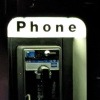Engineering Roundtable - Cymatics with Joel
Check out today's Roundtable project with Joel, SparkFun Product Vetter.
It's that time again - we have another episode of "Engineering Roundtable!" Today's host is Joel, SparkFun product vetter and hacker extraordinaire. Joel is going to guide you through his cymatics project - check it out:
Vimeo version found here.
Just a bit of warning - if you are going to try this out at home, you might want to use some hearing protection. It's very loud! As always., please leave any questions in the comments section below. We'll see you in two weeks with our next edition of "Engineering Roundtable." Enjoy!
Share
Use this URL to share:
Comments 16 comments
Related Posts

The 970-HA-JOKES Payphone Project
July 12, 2022
1

Home Automation with a Raspberry Pi and Homebridge
January 4, 2022
1
Recent Posts

Centimeter Level Accuracy and Easy Survey-Grade RTK Connectivity with PointOne's Polaris
April 16, 2024
0

DataLogger IoT Firmware v1.2
April 15, 2024
0

In Case You Missed it, the RA6M5 is a Thing(+)!
April 12, 2024
0

Why L-Band?
April 11, 2024
2

Introducing the RA6M5 Thing+
April 9, 2024
3

Wireless Connectivity & Flux
April 5, 2024
0
Tags
- 20 Years
- 3D Printing
- Accelerometer
- According to Pete
- Actobotics
- ADR
- Adventures in Science
- AI
- A La Carte
- Alchitry
- A Look Back
- Analog
- Android
- aquaponics
- Arduino
- ARGOS
- ARM
- Art
- Artemis
- Artificial Intelligence
- Ask Me Anything
- astronomy
- Audio
- AVC
- AWS
- Back to School
- badge
- BadgeLife
- Barcode
- Battery
- Beagle
- Best of...
- Binary
- Binho
- Biometrics
- Black Friday
- Blues Wireless
- Bluetooth
- Blynk
- Body Hacking
- Bosch
- Brand Ambassador
- Buck
- Business
- Button / Switch
- Caption Contest
- Cellular
- Chibitronics
- Cloud
- CNC
- Coding
- Community Partner
- Components
- computer engineering
- Connector
- Contest
- Crafting
- Crypto
- culture
- Cyber Monday
- DA16200
- DataLogger
- DEKA
- Desk of an Engineer
- Discussion
- Distance
- DIY
- DIY Bio
- Dogs
- Drones
- Dumpster Dive
- Eagle
- Edison
- Education
- EEPROM
- ElectriCute
- Elektor
- EMG
- Enclosure
- Engineering Essentials
- Engineering Roundtable
- Enginursday
- Environment
- ESLOV
- Espressif
- E-Textiles
- Ethernet
- Event
- Events and Classes
- ExpressLink
- fablab
- Firmware Update
- FIRST
- FLIR
- FPGA
- Free Day
- FreeRTOS
- Fritzing
- FTDI
- GDPR
- Gift Guide
- GIS
- GitHub
- GNSS
- GPS
- GreatScott!
- Guest Post
- Hackaday
- Hackathon
- Hacker-in-Residence
- Hacker/Maker Spaces
- Hackster
- HaLow
- Hardware Hump Day
- History Lesson
- Holiday
- Hookup
- IIoT
- IMU
- Industry News
- inspectAR
- Intel Edison
- Internet of Things
- IoT
- IoTuesday
- ipobesity
- IRC
- Iridium
- IT
- KiCad
- Kit
- Laser Cutting
- L-Band
- LCD
- Learn At Home
- LED
- Legal
- LIDAR
- Light
- LilyPad
- Livestream
- LoRa
- LTE
- Lumenati
- Machinechat
- Machine Learning
- Maker Faire
- Manufacturing
- Mars
- mathematics
- Matter
- May the 4th
- Meet Your Maker
- micro:bit
- MicroMod
- MicroPython
- mikroBUS
- MIKROE
- Milestone
- Modification Station
- Music Technology
- MyoWare
- Nate posts
- National Tour
- New Product Friday
- Newsletter
- NFC
- NVIDIA Jetson Nano
- Onion Omega
- Open Hardware
- Open Sauce
- OpenSTEM
- OSHW
- Particle
- PCB Design
- Photon
- PIR
- Please Wear a Mask
- PNT
- positioning
- PostgreSQL
- Power
- Primary
- Privacy
- Product Focus
- Production
- Programming
- Project Highlight
- Projects
- Pro Micro
- proximity
- Psychology
- Python
- Q&A
- QuickLogic
- Qwiic
- Radio
- Rapid Prototyping
- Raspberry Pi
- redboard
- RED-V
- Renesas
- Resistors
- rfid
- RISC-V
- Robotics
- RTK
- Sale
- Satellite
- Science
- Scratch
- SDR
- Sensirion
- Sensor
- Septentrio
- Services
- Servo
- SIK
- Single Board Computer
- Single Board Computers
- Smart Home
- smol
- software
- Solar
- Soldering
- Space
- SparkFun Ambassador
- SparkFun Edge
- SparkFun Live
- SparkFun Use Case
- SparkX
- SPE
- Spectacle
- Sphero
- Start a Project
- STEM/STEAM
- STM32
- STMicroelectronics
- Success with SparkFun
- Supercon
- Sustainability
- Swarm
- Table Top Gaming
- Teardown
- Tech Comparison
- Tech Talk Tuesday
- Teensy
- tensorflow
- Testing... Is this thing on?
- Thing Plus
- Thread
- tinyML
- ToF
- Tools
- Triband
- Tutorial
- u-blox
- Ultrasonic
- USB
- VCSEL
- Video
- wearables
- Weather Shield
- webinar
- Website Feature
- WiFi
- Wireless
- women
- Work From Home
- Workshop
- WPI
- XBee
- XRP
- Zigbee
I wanted to point something out to those who were wondering why he was just getting circles with the circular plate. The sinusoid and the circle are closely related to each other (by Pi), by having a circular plate, all you will see is the nodal points he described in circles. The place where the salt is forming these circles is the period length. Remember, the higher the frequency the shorter 1 period. With this said, if you get up into the MHz ranges, you are dealing with mere inches/centimeters.
Now the difference between the circle and square. Sound is sent out in a circular pattern, and on a circular plate it will not reverb/reflect the sound back to the speaker (equal and opposite). However, with a square, you don't get this since the sound wave will reach an edge before it reaches a corner, and since the square does not fit within the ratio of Pi, there will be some reverb/reflection. This will cause waves to do partial cancellation and see the complex patterns.
I welcome people to correct me on terminology, but I hope I gave everyone new to cymatics a gist of what you could see.
Nice video, thanks for sharing. Oh, and don't attempt to listen with headphones. 0_0
(it hertz)
Yes, yes it does.
Perhaps this would be a good application for a surface transducer?
super cool subject
presentation style old brained people use (talk about what you are going to talk about>show it>talk about the cool stuff)
presentation style young brained people use (I'm a 47 year old genius) (show the cool stuff>talk about it)
the interwebs has reduced old brain stuff, but most people are still prisoners of the medieval school system.
thank you for making this, it may provide a fundamental insight into the nature of the universe.
is it possible to do this without any sound? maybe modifying the speaker... using something else...
I was thinking on using this to build something beautiful for my living room.
Does this work with ultrasound?
Somewhat related, Non-Newtonian fluids on speakers. http://youtu.be/3zoTKXXNQIU
Very cool patterns. Try an old (really old) HP 202A/B generator to get continuous frequency sweep. I'll offer some hopefully useful critique. First, I think you are not sending sound through the plate, you are shaking it with the speaker coil and the force is applied where the glue is applied. It is like shaking a big piece of sheet metal and getting all those cool sounds. So, you need the theory of vibrations, not sound. Check on Bessel Functions and the modes of vibration of a drum head for a good example - you are into a special case of the hypergeometric equation here, so take a deep breath and a nicotine patch. On the square plate I could see the circular shape faintly at the higher frequencies like 340 Hz. Was it glued to the outer circle of the speaker cone/frame? If yes, the driving force is much different than on the round plate, with pressure applied over a large circular area. Second, modeling this mathematically is a nightmare without finite element techniques and numerical methods. Closed form solutions are impossible for things much more complicated than said drum head. So you can throw out all the talk of sin waves and such. Vibration nodes, yes. Sound? Not really. Sinusoidal motion? Maybe sort of near nodes. Try the salt on an out of balance washing machine. Never heard of cymatics. From the web, it looks like there is a mix of sound and vibration effects depending on the medium and mistakenly called wave phenomena in most cases. (If Sparkfun does not have an HP202, you really should keep your eyes out. They are phenomenal. The 202B is 0.008 Hz to 1200Hz continuous.)
so, putting some weights on the circle, perhaps paper clips, should allow you to get varying shapes...
I would think so, provided there is enough mass compared to the mass of the disk and the driving force and how rigid the disk - Young's and Bulk modulus of the material. More likely, if the masses are attached by being rigidly clipped on or glued, there will be big difference. From the looks of the mechanics, it would take something like 100 gram weights. But you would have to test. It might be very sensitive to adding mass in the right spots and you could develop a new kind of measuring instrument.
This brings a whole new meaning to engineering roundtable.
And just cause I can't stop myself, circleception.
Something that I found interesting was most of the square plate patterns resembled popular ceramic or stone tilling patterns. Just a conincidence I'm sure, but IMHO a remarkable one.
Aren't particle collection points where the wave reflections cancel? basically, standing wave patterns? That's why the circular plate had round nodal patterns. A multi driver configuration might be a great way to create more complex patterns
That was excellent! Very cool demonstration, and a nice , calm , clear delivery.
could you add links for the parts used in the video?